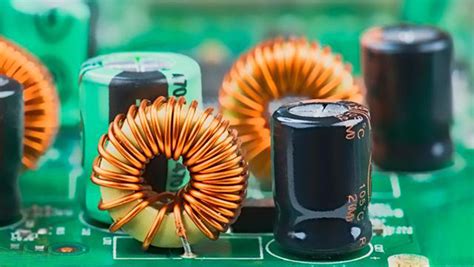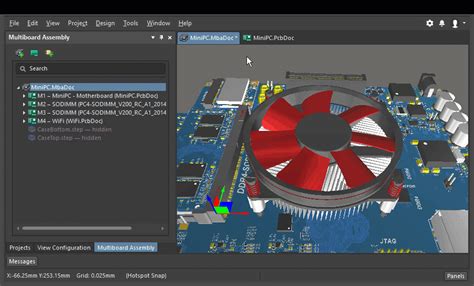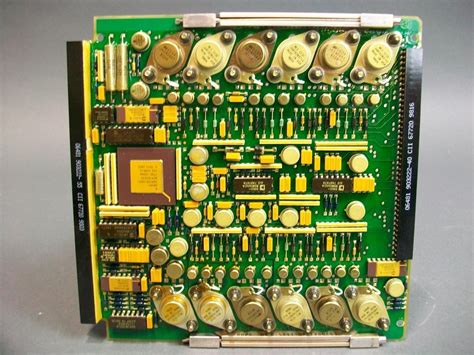Innovations in PCB Industrial Processes and Technologies
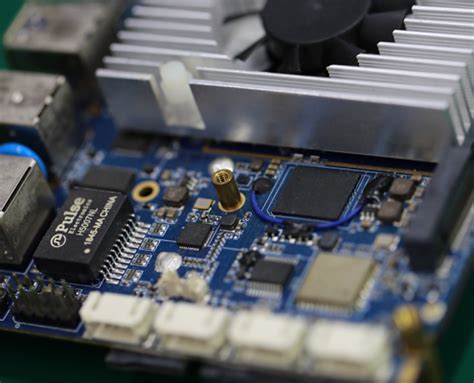
Key Takeaways
In the fast-evolving landscape of pcb manufacturing, staying updated with the latest trends is essential for your business. The advancements in technology are not just about efficiency; they also aim to enhance precision and reduce waste, which helps in minimizing the pcb manufacturing cost. As you explore information from various pcb manufacturing companies, consider how automation and innovative materials are reshaping production lines. Implementing these cutting-edge technologies can significantly impact your pcb manufacturing business, providing you an edge in a competitive market.
"Embrace innovation not just as an option, but as a necessity for growth."
This mindset can help you navigate through the complexities of modern pcb manufacturing processes. The integration of sustainable practices is also paramount; consumers increasingly prefer products that align with eco-friendly initiatives. By focusing on what drives efficiency and sustainability, you can ensure that your business remains relevant and thrives amid changes in the pcb industry. Remember, advancements today will shape the future dynamics of your operational processes.
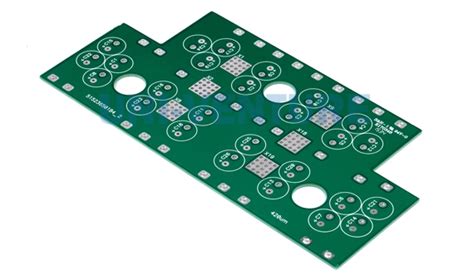
The Evolution of PCB Manufacturing Techniques
The landscape of PCB manufacturing has undergone significant transformation over the years, adapting to advancements in technology and shifting market demands. Initially, the processes were largely manual, leading to high pcb manufacturing costs and limitations in precision and efficiency. However, as the industry evolved, pcb manufacturing companies began to incorporate innovative methods such as high-density interconnect (HDI) technology and surface mount technology (SMT). These advancements have significantly improved the capability of manufacturing more complex designs while minimizing space and maximizing performance.
Moreover, technological innovations such as lasers for etching and drilling have added another layer of precision to PCB manufacturing. This precision not only enhances product quality but also reduces material waste, which is crucial for keeping pcb manufacturing costs down. By moving towards automation and utilizing robotics in assembly lines, you can witness a marked increase in production efficiency while ensuring consistency in product output.
To provide a clear overview of how these evolving techniques have impacted the industry, refer to the following table:
| Manufacturing Technique | Description | Benefits |
|---|---|---|
| Manual Assembly | Traditional method relying on human labor | Low initial investment |
| Surface Mount Technology | Allows components to be mounted on both sides | Higher component density |
| HDI Technology | High-density interconnect for compact designs | Improved performance |
| Laser Cutting | Precision cutting with minimal material waste | Low error rate |
In conclusion, understanding these evolution steps will be paramount for any entity running a pcb manufacturing business today. Adapting to these refined processes not only enhances productivity but also sets your operations apart in this competitive landscape. As you continue to explore the essential developments within this sector, it’s vital to keep pace with emerging technologies that promise to reshape the future of PCB production.
Cutting-Edge Materials Transforming PCB Production
In the ever-evolving world of PCB manufacturing, the introduction of cutting-edge materials is playing a pivotal role in enhancing production capabilities. You may find that these innovative materials are not only improving performance but are also significantly reducing pcb manufacturing costs. For instance, advanced substrates like high-frequency laminates are allowing pcb manufacturing companies to achieve greater signal integrity, making them ideal for modern electronic applications. Additionally, the rise of flexible and rigid-flex circuits is enabling manufacturers to create more compact and lightweight devices without compromising on durability. When you consider the competitive nature of the pcb manufacturing business, these materials offer a vital advantage by fostering greater design complexity while maintaining efficiency. As sustainability becomes crucial, the incorporation of eco-friendly materials also aligns with industry trends, reflecting an urgent need for responsible production practices. In this context, you can appreciate how investing in these cutting-edge materials enables companies to meet stringent performance standards while facilitating a greener approach to PCB fabrication.
Automation and Robotics in PCB Assembly
The integration of automation and robotics in the pcb assembly process is transforming the landscape of pcb manufacturing. By utilizing advanced robotic systems, you can achieve enhanced precision and speed, significantly improving production efficiency. These sophisticated machines are capable of handling intricate tasks that were once reliant on manual labor, reducing errors and increasing the consistency of output. As a result, pcb manufacturing companies now benefit from lower pcb manufacturing costs while also accelerating time-to-market for new products. The automation of assembly lines allows for higher throughput, which is crucial in a competitive landscape where customer satisfaction is paramount. Additionally, the adoption of robotics enables a more flexible manufacturing environment where you can easily adapt to changing demands and product specifications. This shift not only streamlines operations but also fosters innovation within your pcb manufacturing business, paving the way for new technologies and processes that prioritize sustainability. By embracing these advancements, your production capabilities can align with modern requirements, ensuring that you remain at the forefront of industry trends.
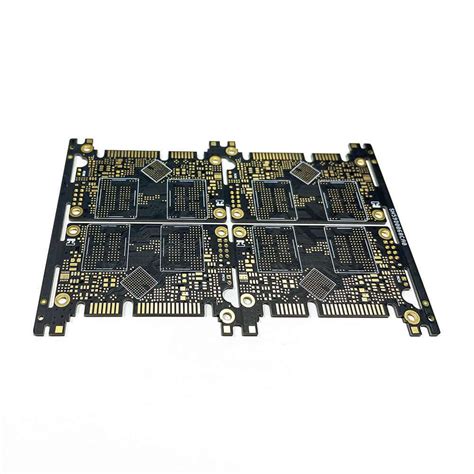
Sustainable Practices in the PCB Industrial Sector
In the evolving landscape of pcb manufacturing, sustainability has emerged as a vital consideration for industry leaders. As you delve deeper into the operations of pcb manufacturing companies, you will discover innovative approaches that are designed not only to minimize environmental impact but also to enhance operational efficiency. Implementing sustainable practices can significantly reduce the pcb manufacturing cost, ensuring that businesses remain competitive while adhering to environmental standards.
One notable practice involves the adoption of eco-friendly materials, which are increasingly prioritized in the production process. By incorporating recyclable and non-toxic substances, you can contribute to a greener supply chain and bolster public perception of your pcb manufacturing business. Moreover, processes such as energy-efficient machinery and waste reduction programs have become commonplace, allowing companies to cut down on energy consumption and improve overall resource management.
Additionally, many manufacturers are exploring advanced technologies such as water-based solder and lead-free options, reinforcing their commitment to sustainability. You might find that these innovations not only benefit the environment but also enhance product quality and performance. Embracing these sustainable practices in your operations can lead to significant long-term advantages, ensuring a positive impact on both your business’s bottom line and the planet. For more insights on PCB practices and innovations, visit Andwin PCB.
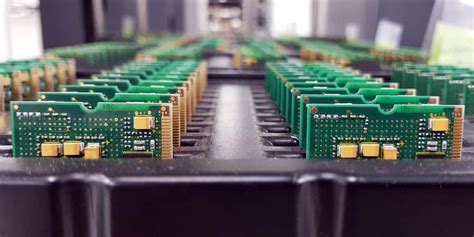
Enhancing Precision through Advanced PCB Design Software
In the competitive landscape of pcb manufacturing, the precision of designs significantly impacts the overall quality and functionality of the final products. Advanced PCB design software has emerged as a revolutionary tool that optimizes your design processes, allowing you to create intricate layouts with unparalleled accuracy. By integrating features such as automated routing, real-time simulation, and design rule checks, this software assists pcb manufacturing companies in minimizing errors that traditionally plagued manual processes. As a result, you can achieve a reduction in the pcb manufacturing cost by streamlining production and enhancing first-pass yields. Modern features also enable collaborative efforts among teams through cloud-based platforms, ensuring that all stakeholders can contribute and validate designs irrespective of their geographical locations. Emphasizing sustainability, many of these tools now facilitate designs that not only meet high fidelity requirements but also consider material optimization, aligning with eco-friendly goals in your pcb manufacturing business. With an investment in such innovative software, you position yourself at the forefront of industry advancements, ready to tackle the demands of tomorrow’s market.

The Role of IoT in Modern PCB Processes
The integration of the Internet of Things (IoT) into your PCB manufacturing processes marks a significant transformation in the industry. As you engage with pcb manufacturing companies, it’s essential to recognize how IoT-enabled technologies enhance efficiency, reduce costs, and improve precision in production. By implementing smart sensors and connected devices, manufacturers can monitor equipment performance and environmental conditions in real-time, thus facilitating proactive maintenance and minimizing downtime. This connected ecosystem allows you to gather valuable data on various processes, leading to insights that can refine operations further and drive down the pcb manufacturing cost. Additionally, the adoption of IoT not only streamlines production but also opens up new avenues for innovation within your pcb manufacturing business model. In this evolving landscape, embracing these technological advancements positions you favorably for competitiveness while contributing to a more sustainable future for the industry. As IoT continues to reshape practices, you will witness enhanced collaboration among teams and improved responsiveness to market demands, ensuring that your operations remain agile and aligned with emerging trends.
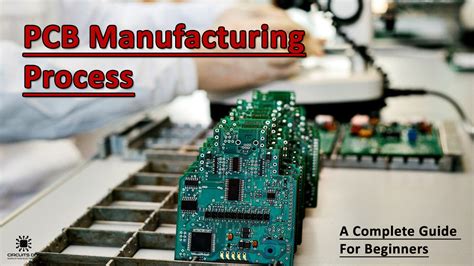
Future Trends: What’s Next for the PCB Industry?
As you look to the horizon of the PCB manufacturing industry, several exciting trends are beginning to take shape, poised to redefine the landscape. First and foremost, technological advancements are driving significant shifts in how PCB manufacturing companies operate. You will see an increasing incorporation of smart technologies like automation and artificial intelligence, which streamline processes and reduce PCB manufacturing costs. These innovations not only enhance efficiency but also improve precision in production, ensuring higher quality end products.
Furthermore, as environmental concerns grow, sustainable practices will become a focal point for your business strategies. Embracing eco-friendly materials and processes can significantly dictate your success as consumers lean more towards responsible sourcing. Additionally, collaborations between various stakeholders in the industry will pave the way for rapid dissemination of innovative techniques, making it essential for you to stay ahead of these developments.
The future also points towards greater integration of IoT (Internet of Things) within PCB manufacturing processes. This allows you to monitor production in real-time, ultimately leading to better decision-making and resource allocation. As a result, you’re positioned not just to keep pace with change but to lead it within your PCB manufacturing business.
Navigating these trends will require adaptability and foresight; by proactively embracing these innovations now, you can ensure that your operations remain competitive and that you effectively serve your clientele’s evolving needs in this dynamic sector.
Case Studies: Successful Innovations in PCB Technologies
The landscape of pcb manufacturing has seen remarkable transformations through innovative practices and technologies. For instance, leading pcb manufacturing companies have integrated advanced methodologies that optimize workflows, significantly reducing the pcb manufacturing cost while enhancing output quality. One notable case study involves a company that adopted a fully automated assembly line, which not only improved production speed but also minimized human error—an important factor in maintaining precision in the pcb manufacturing business. Additionally, this approach allowed for real-time monitoring of the production process via IoT devices, enabling swift adjustments and further refinements. These innovations illustrate the potential for cutting-edge technologies to reshape the industry by providing scalable solutions that cater to diverse market needs. As you explore these case studies, you’ll see how such advancements are not merely trends but essential components driving the future of pcb manufacturing towards greater efficiency and sustainability.
Conclusion
In summarizing the advancements in pcb manufacturing and the technologies involved, it becomes evident how these innovations not only reshape the industry’s landscape but also enhance operational efficiencies significantly. As you explore pcb manufacturing companies, you will find that many are leveraging cutting-edge materials and automation, which drastically reduces the pcb manufacturing cost while ensuring higher quality outputs. Furthermore, sustainable practices are becoming increasingly pivotal, as they not only align with global environmental goals but also positively impact your bottom line. By incorporating advanced design software, you can streamline your processes and improve design accuracy, facilitating a more competitive pcb manufacturing business. Ultimately, understanding these trends will equip you with the knowledge necessary to thrive in a rapidly evolving sector and harness the benefits of emerging technologies effectively.
FAQs
Q: What are the key factors influencing pcb manufacturing costs?
A: The pcb manufacturing cost is primarily influenced by factors such as material quality, complexity of design, and production volume. High-quality materials and sophisticated designs often lead to increased costs.
Q: How do I choose the right pcb manufacturing company for my project?
A: To select an appropriate pcb manufacturing company, consider their experience, customer reviews, certifications, and capabilities in handling your specific project needs. It’s essential to ensure that they can deliver on quality and timelines.
Q: What is the typical process for a pcb manufacturing business?
A: A standard pcb manufacturing business typically follows several steps: design customization, material selection, circuit board fabrication, assembly, testing, and finally shipping. Each stage is essential to ensure precision and reliability.
Q: Are there innovative technologies improving pcb manufacturing processes?**
A: Yes! Recent advancements in automation, robotics, and advanced design software are significantly optimizing pcb manufacturing processes, enhancing efficiency while reducing errors.
Q: How can sustainable practices affect my pcb manufacturing project?
A: Implementing sustainable practices in your pcb manufacturing project can lead to lower environmental impact. It may also reduce production costs in the long term by utilizing energy-efficient technologies and recycling materials.



